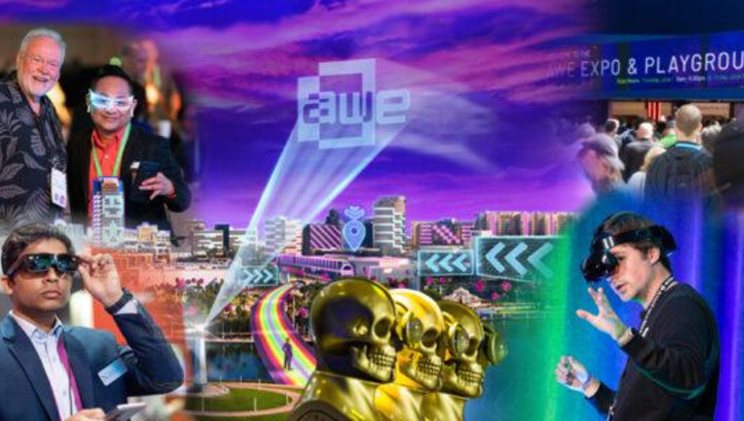Artificial Intelligence, Augmented Reality and “Shared Reality”: The new interface of retail

I attended AWE (Augmented World Expo) 2025 in California in June. Celebrating its 15th anniversary this year, the event clearly demonstrated the advancements made by augmented reality (AR), artificial intelligence (AI), and wearable technologies, and the transformations they are creating, particularly in sectors like retail. This year, three prominent visions were represented on the AWE stage: Snap, Auki Labs, and AWE founder Ori Inbar.
Ori Inbar, who gave the opening speech of the event, emphasized that XR technologies are no longer the “future” but a part of the present. XR (AR/VR/MR) solutions have reached more than 100 million users today and are expected to reach 1 billion users in the next decade. This prediction seems quite realistic as hardware becomes lighter, more accessible and user-friendly; contextual experiences integrated with AI become widespread; the developer ecosystem grows rapidly and industries integrate these technologies into real operations. Inbar’s words were quite clear: XR is no longer a vision, but a permanent and human-centered reality.
Snap CEO Evan Spiegel took the AWE stage for the first time to introduce the next-generation Specs glasses, which will be released in 2026. Specs is an ultra-lightweight but high-processing augmented reality glasses that emerged as a result of Snap’s 11-year R&D investment and $3 billion development process. Calling glasses might be a bit of an understatement, because Specs is actually a new-generation personal computer that integrates artificial intelligence into the physical world. Real-time 3D objects can be created with the Snap3D API, and voice commands in more than 40 languages can be processed with the automatic speech recognition infrastructure. Integrated with OpenAI and Google’s Gemini platform, Specs can provide instant information, suggestions, and guidance based on your location. Especially from a retail perspective, it becomes possible for store employees to manage shelf management, inventory tracking, and operational actions via the glasses, while customers can scan products directly with the glasses to get information, make comparisons, or experience them virtually. Snap’s message is very clear: We will no longer interact with technology by looking at our surroundings, but by looking at our surroundings.
One of the visions that impressed me the most at the event was put forward by Auki Labs CEO Nils Pihl. Pihl brought up the concept of “shared reality.” Thanks to the decentralized positioning infrastructure developed by Auki Labs, devices can synchronize their locations with each other at millimeter level without the need for GPS. Thanks to this infrastructure, different employees within a team can access the same digital object in the same physical space at the same time and share digital information simultaneously. This provides a great advantage, especially in environments where multi-layered operations are carried out, such as retail. While a store employee sees a missing product in the aisle in the glasses, another employee can be directed directly to that point by receiving directions. This synchronization between devices creates a collective rather than individual digital awareness. We are talking about a very critical transformation for retail operations.
Today, we shop with cameras using Specs and enrich physical products with digital content using augmented reality glasses. However, it's clear that in just a few years, we'll go far beyond this. We'll be able to deliver AR experiences with contact lenses, and even interact with virtual screens triggered directly by brain signals. Digital interfaces that don't exist in the physical world but are invoked through mental commands will radically transform the user experience. In other words, the store experience will be shaped not just by sight, but by thought and intention.
AWE 2025 didn't just introduce us to new hardware and software; it also showcased how retail will interface in the future. Snap offers a vision that makes individual interactions intuitive, while Auki Labs creates common digital layers for teams working together in the same space. Ori Inbar strongly emphasizes that these technological shifts are no longer niche but mass. Retail is no longer an app or a channel, but an experience. And in the near future, this experience will take shape not on screens, but in our lenses, in our surroundings, and even inside our minds.
